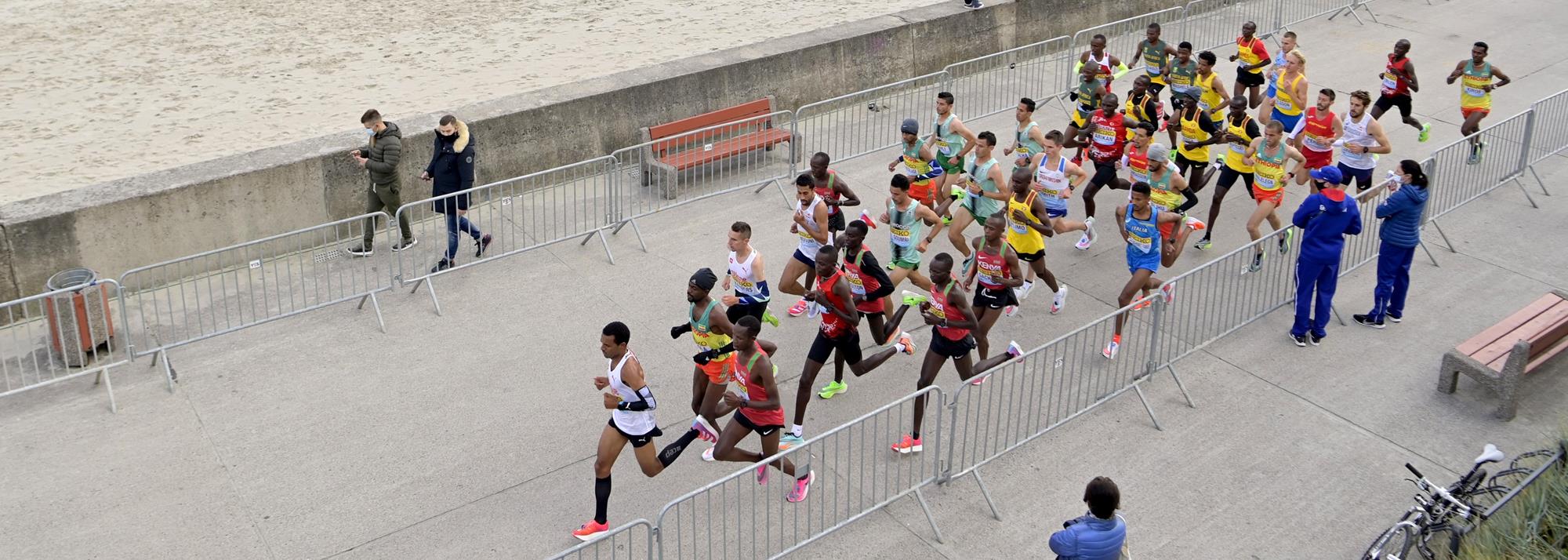Preliminary analysis of data collected at last weekend’s World Athletics Half Marathon Championships indicates that Gdynia has the best air quality of any major athletics event or road race measured since World Athletics’ Air Quality Project started in 2018.
The data suggests that the clean air in the Polish city, combined with the optimal temperature and humidity, was among the factors that contributed to the high number of personal best performances in Gdynia, which included the world record set by the women’s winner Peres Jepchirchir.
As part of World Athletics’ continuing pilot programme to measure air quality at sporting venues around the world, and with the support of the local organising committee, World Athletics’ health and science department measured clinical and environmental data in Gdynia.


Two Kunak air quality monitors were used in Gdynia – one at a fixed position near the start line, and one mobile device attached to a bicycle which followed the athletes around all four laps of both races. More than 70,000 data points were collected for various pollutant gases concentrations, particle concentrations and meteorological parameters across an 18-hour period in Gdynia.
Pending data validation, the data showed very low concentrations of pollutant gases and particulate matter. The low levels of anthropogenic emissions detected, combined with the location at the seaside, the timing of the competition, and the meteorological conditions of the day, have resulted in the lowest level of pollutants that the clean air programme has monitored to date in any urban race.
"The data we collected suggest that conditions in Gdynia were optimal for runners and spectators," said World Athletics Health & Science Department Manager Paolo Emilio Adami. "The strong winds and rain of the first day cleared the air and the levels of particulate matter (PM) that we recorded were the lowest we have so far measured in road races. Levels of gasses, ozone (O3) and nitrogen dioxide (NO2) were consistent with the environmental conditions and the location of the city. From a personal standpoint, it was fantastic to cycle next to the athletes in both the men's and women's races."
By publishing air quality from venues such as this, World Athletics hopes to encourage athletes, recreational runners, cities, local and national governments and member federations to become more conscious of air quality and the impact that it has on health and performance.
Most of the pilot project has so far been conducted in stadiums, with Kunak installing air quality monitors in a number of venues around the world. But as most road races are held in major cities that are generally susceptible to substantial amounts of air pollution, they are uniquely placed to provide a wealth of data to scientists and researchers, given the length of time runners spend on the course, and the varying environmental conditions they’re exposed to over that time.
Upon implementation of air monitoring programmes, World Athletics will set air quality standards for major championships and sanctioned events, utilising the WHO air quality standards. The guidelines indicate that by reducing particulate matter pollution from 70 to 20 micrograms per cubic metre, air pollution-related deaths can be cut by about 15 percent.
World Athletics







 Countdown
Countdown





